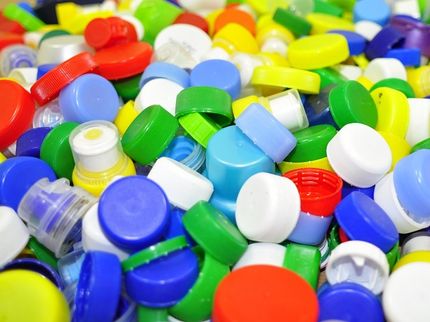Mixed Growth Prospects for Plastics in Food and Beverage Packaging
14-May-2001
The trends in the European plastic food and beverage packaging market have
recently been unveiled in a report by Frost & Sullivan the international
marketing consultancy company.
The plastics food and beverage packaging continues to show good growth
prospects. The main factors driving the market are replacement of
traditional materials, improvements in polymer properties and processing
equipment, and growth in the pre-packed food market. In 2000, total
revenues of plastic resins used in this market amounted to $4.91 billion
and are projected at $7.15 billion in 2007, representing average annual
growth of 5.5%.
There are significant differences in projected growth rates for the various
commodity plastics used for food and beverage packaging. As Frost &
Sullivan Senior Plastics Industry Analyst David Platt explains, "During the
forecast period of 2000 ? 2007 thermoformed and injection moulded
polypropylene are expected to show the highest annual growth rates (10.7%
and 9.5% respectively). Bottle-grade PET growth is not far behind at 9.2%
/annum. In contrast, the slowest growing polymers will be flexible PVC
which is forecast to remain virtually static, and expandable polystyrene
with projected growth of 0.6% per annum."
The study highlights the trends in inter-polymer substitution taking place
in the food and beverage packaging market. The growth in use of
Polyethylene Terephthalate (PET) for mineral water bottles has propelled
polyester into the number one position with a share of 30.5% of total
market revenues in 2000. Polystyrene, with 17.7% of total market revenues
is the second most important polymer used in food & beverage packaging,
followed by polypropylene with 16.6% and LDPE with 14.2%. PET,
polypropylene and LLDPE are projected to increase their market share even
further during the next five years, while PVC, LDPE, polystyrene and to a
lesser extent HDPE will continue to lose market share.
New technologies will continue to play an important role in the further
development of this market. A key task for R&D is to improve the
performance properties of the polymer including toughness, strength,
processing speed, heat resistance, clarity, etc. The use of metallocene
catalyst technologies allowing the production of polyolefins with improved
properties is one of example of how new technologies are opening up
opportunities for food packaging. Packaging films made from these new types
of resin are providing similar or superior packaging performance at
significantly lower gauges. In rigid packaging applications these materials
permit thinner walls and hence have economic and environmental benefits.
Also, the development of co-extrusion technology has encouraged the
development of innovative packaging ideas based on multi-layer film, which
has further expanded the market for plastic food and beverage packaging.
Consumers are becoming more demanding of their food packaging. They want
food to retain its fresh look for longer and to have the correct flavour,
odour and texture. They also want packaged food to have greater
convenience, be tamper resistant, safe and environmentally friendly. The
packaging industry is responding with ever more new and innovative
packaging solutions. The most interesting areas are multi-layer film and
trays, stand-up pouches and caps & closures.
Most read news
Topics
food
plastics
Frost & Sullivan
water
resins
Replacement
polystyrene
polypropylene
polyolefins
polymers
Interpolymer
extrusion
consultancy
Organizations
Frost & Sullivan

Get the chemical industry in your inbox
From now on, don't miss a thing: Our newsletter for the chemical industry, analytics, lab technology and process engineering brings you up to date every Tuesday and Thursday. The latest industry news, product highlights and innovations - compact and easy to understand in your inbox. Researched by us so you don't have to.









































